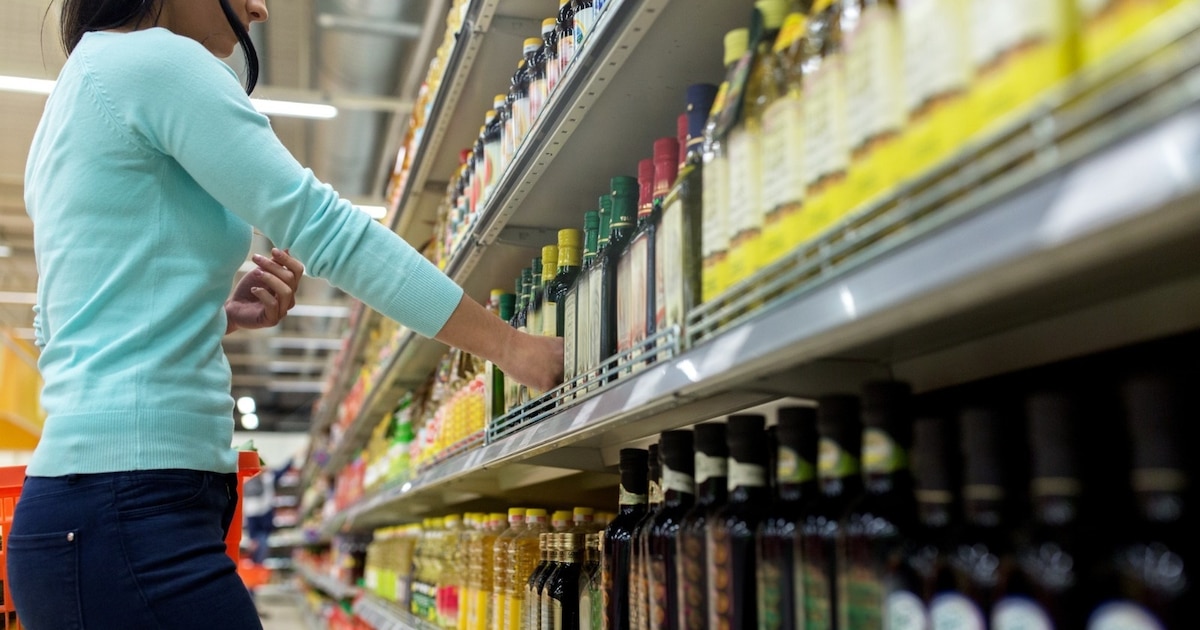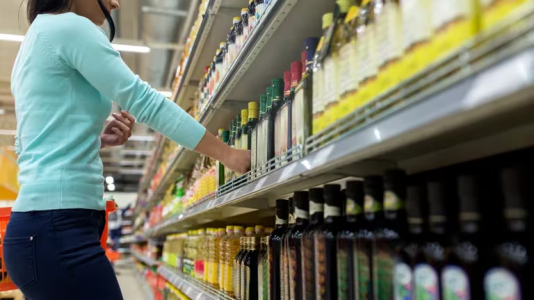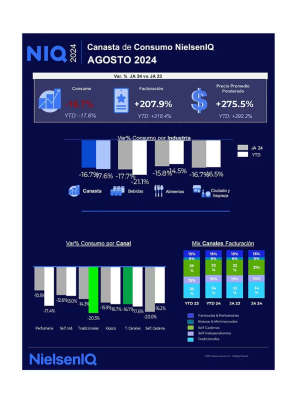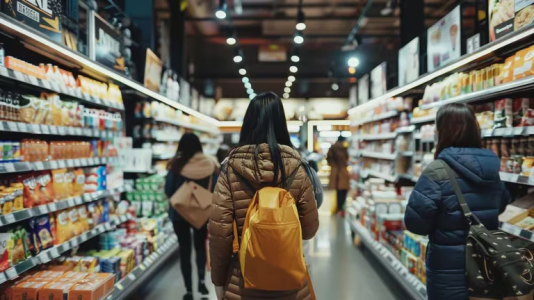All the Answers
Well-known member
Another private indicator confirms that mass consumption fell by nearly 17% in August - Infobae

Source:

Otro indicador privado confirma que el consumo masivo se desplomó cerca de 17% en agosto
Son datos de la consultora Nielsen IQ. Todos los canales de ventas registraron pérdidas en los últimos dos meses. El sector de alimentos y bebidas muestra la caída más significativa
September 19, 2024
These are figures from the Nielsen IQ consultancy. Scentia had reported a similar figure. All sales channels have recorded losses in the last two months. The food and beverage sector shows the most significant decline.

According to the Nielsen IQ consultancy, consumption fell by 16.7% in August and by 17.6% in the year-to-date.
Following the data from the consultancy firm Scentia published a few days ago, a new private report confirmed the sharp fall in mass consumption in August compared to the same month last year. This is Nielsen IQ , which reported that the contraction - according to its figures - was 16.7% and sales have accumulated a decrease of 17.6 percent.
All channels closed in the negative in the last two months (July-August) and although in the monthly comparison some retailers claim to be a little better, the year-on-year comparisons will continue to be very negative, since 2023 was a year of strong consumption, especially in the last four months of the year, not only because of inflation but also because devaluation was approaching and goods would then be much more expensive.
According to the report, food consumption fell by 15.8%, driven by non-basic items (-14.1%), candy (-17.3%) and basic foods (-17.6%). Meanwhile, beverage consumption fell by 17.7%, continuing the trend. Alcoholic beverages fell by 27.2% and non-alcoholic beverages by 13.9%. Personal care and cleaning fell by 16.7% last month, driven by household and clothing cleaning (-18.5%) and cosmetics and toiletries (-15.9%).
Similar figures were observed by the consultancy Scentia , for which mass consumption plummeted by 17.2% in August. This figure was the highest since March 2021, when the decline had been 18.3%. In the cumulative total for 2024, the decrease reaches 10.6%.
For the firm headed by Osvaldo del Río , the products that were consumed the least during the last month were impulse purchases (-27%), non-alcoholic beverages (-24.7%), alcoholic beverages (-24.3%), hygiene and cosmetics (-20.1%), clothing and household cleaning products (-15.9%), breakfast and snacks (-14.4%), food (-12.4%) and perishables (-9.4%).

Consumer basket (Nielsen IQ)
By sales channel, the drop in supermarkets was 17.9% year-on-year and in self-service stores, 16.5%. The fall in mass consumption in August was much more pronounced in the interior of the country than in the AMBA: the falls were 22.5 and 8.6% respectively. Regarding the food sector, in the metropolitan area it decreased by 4.8% and in the rest of the country it plummeted by 16.9 percent.
But the negative figures are not only being seen in shops, but also in SMEs: according to the Argentine Confederation of Medium-sized Enterprises ( CAME ), their sales decreased by 10.5% and have accumulated a decline of 16.2% in the first eight months of the year. Compared to July, a drop of 1.6% was also seen.
In the analysis by sector, all the sectors surveyed showed decreases compared to the same period of the previous year. The largest annual decline was detected in Perfumeries (-29.3%), followed by Pharmacies (-17.4%). In the accumulated 2024, the largest decline also occurred in Perfumeries (-32.1%) and Pharmacies (-27.8%).
It is worth noting that consumption represents 70% of GDP and was one of the factors that influenced the contraction of the product in the first half of the year. In this regard, according to the INDEC, GDP fell 3.4% in the first 6 months of the year, as a result of the 2.2% deficit in the first quarter and 1.7% in the second. Private consumption fell 9.8% and public consumption, 6 percent.
The main reason for the fall in consumption is the loss of purchasing power. According to the Interdisciplinary Institute of Political Economy (IIEP UBA-CONICET) , the average real salary of formal salaried workers in the private sector registered a sharp contraction between November and December of last year. Between those two months, the loss of purchasing power was 11% . The magnitude of this monthly fall is unprecedented during this period since October 2015.

According to the report, food consumption fell by 15.8%, driven by non-basic items (-14.1%), sweets (-17.3%) and basic foods (-17.6%).
“The slowdown in inflation, together with wage negotiations within the framework of collective bargaining agreements, made it possible, first, to prevent the purchasing power of wages from continuing to decline and, then, to begin a recovery process. However, as of June 2024 (latest available data), the purchasing power of average wages continued to be 5% lower than the November value ,” the report stated.
In nominal terms, in June the average remuneration of registered private sector employees was $1,148,296 while the median reached $902,616 .
From November 2023 to August, the real minimum wage accumulated a fall of 26.5%. “The previous downward trend, together with the strong contraction of these months, places the minimum wage among the lowest values in the series, except for the first years of convertibility and after its collapse, in 2002/2003. Likewise, it implies an erosion of 59% with respect to the maximum value of the series, in September 2011,” said the IIEP.

